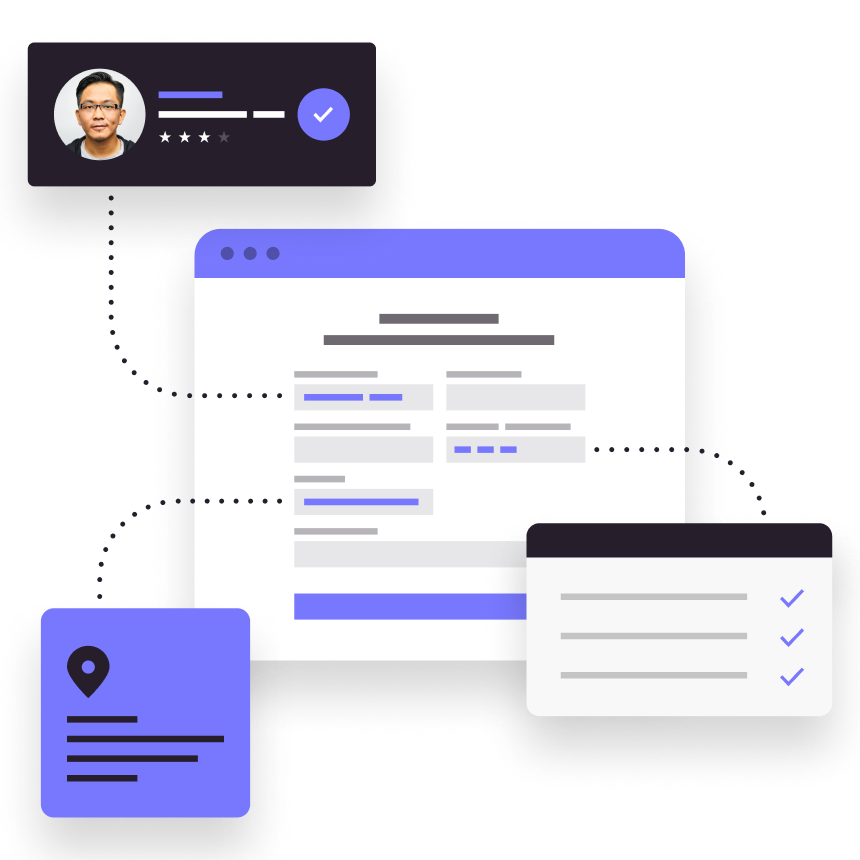
From paper to pixels, connecting to pension members in a digital world
The world wide web was invented in 1989. If you were 18 years old when that happened and the world first started moving online, you will now be in your 50s. If you started earning your living at that time, you will have been working for over thirty years; you may or may not have thought much about pensions before (even if you have accrued several during your career) but it’s highly likely that you will be doing so right now. And with over three decades of internet-mediated working and living behind you, a digital-first approach to getting things done will frame your expectations of any service provider.
Communication by post is past it
According to Age UK’s latest research, from 2009 to 2020 the proportion of UK adults over 50 who reported regularly using the internet rose from 41% to 88%. In the context of this generational shift in behaviour and expectations, the paper-based communications traditionally preferred by the pension industry are, well, nearing retirement.
Membership engagement by post is slow, expensive for the fund and the member and simply not very engaging. The postal service typically yields low response rates, and the annual statement has fallen out of step with the way the world communicates and takes action. And, while people typically won’t move house as often as they change jobs (and pensions) in their lifetime, the United Kingdom’s Royal Mail statistics indicate that about 10% of the population move every year, a fact that will undoubtedly have a negative impact on address data held by a pension scheme.
Free Dashboard Accuracy Report

The UK pension industry is going digital, fast
So, the UK pension industry is playing catch-up on digital engagement, both in terms of member expectations, data and with the way the sector operates in the wider world. A ‘dashboard’ – a digital portal giving information on all a person’s pensions, including their state pension, online, securely and in one place – was launched by the Australian Tax Office in 2013. Sweden has had its MyPension dashboard since 2004.
Now, the digital revolution in pensions is arriving in the UK with compulsory onboarding to the ecosystem starting in 2023, pension dashboards look set to shake up the sector and member expectations. Recent research by the Association of British Insurers (ABI) confirms that dashboards are likely to be popular, if not interactive enough to meet younger age groups’ digital demands, with 2 in 3 working-age adults likely to use them. Based on the experience of dashboards internationally, pension schemes may receive up to 20,000 ‘find requests’ a day, or one every couple of seconds, once the system is operational. So, the industry needs to be ready.
“the digital revolution in pensions is arriving in the UK with compulsory onboarding to the ecosystem starting in 2023, pension dashboards look set to shake up the sector and member expectations.“
The partial-match problem about to hit pensions
The UK pension dashboards ecosystem will encompass dashboards operated by one of several registered providers – these could include banks, fintechs, pension schemes or insurers and data providers. These dashboards will be populated with pension information – information held by a pension provider, scheme or trust.
A matching member identity will be the key that unlocks that information and allows a provider or scheme to return a ‘found’ pension to the dashboard. The problem accelerating toward the UK pension industry at millions of megabytes per second is what to do in the likely event of a ‘partial’ or inconclusive member match. The traditional response of a paper-based industry reliant on bricks-and-mortar address data would be to trace and retrospectively reconnect with a ‘missing’ member by sending a confirmatory letter to a new address. In the age of digital pensions, however, that kind of response time just isn’t going to fly.
The pensions industry is changing

Pension membership identity data for a digital era
According to the recent ABI report conducted by Britain Thinks, consumers see security and complete data to be the core of dashboards and will expect these to be in place. Pension administrators currently reviewing their membership data strategy in response to the imminent arrival of the UK dashboard might consider digital member identifiers.
Our research has found that email addresses and mobile numbers appended to member records are 71.4% more efficient than new addresses when appended as identifiers to member records. Both are member-centric identifiers, both are mobile, following their owners around as they move from place to place, even if they are moving to another country.
“Our research has found that email addresses and mobile numbers appended to member records are 71.4% more efficient than new addresses when appended as identifiers to member records.“
Get your membership data up to speed
Our data underpins most of the UK pension market, we provide data and technology services to nearly all the tracing companies in this space. We know our data works, as we have been supporting the pensions industry for over a decade.
Member data accuracy

As a digital identity technology and data company, we can update and verify your member data, appending digital identifiers, like email address and mobile number, maintaining your data accuracy and overcoming your partial match problems as a data provider to the UK Pensions Dashboards Programme. And, significantly, we can do this without creating additional data capture compliance obligations for your scheme.
The digital revolution is fast approaching the UK pensions industry and a generational shift in membership behaviour and the expectations they hold their pension providers to. Digital identity and digital identifiers will be the key to matching expectations and unlocking customer trust for the successful provider, scheme or trust.
Frequently asked questions
Can GBG provide (or append) email or mobile data for my members?
Probably. Partnering with one pension fund recently we were able to append an email address, mobile number or both to over 35% of the scheme’s membership. We found that in 60% of instances where we were able to append an email address, we were also able to append a mobile number.
Do I need member permission to use email or mobile data provided by GBG?
No, this is a common misconception. Your pension fund can use the email addresses and mobile numbers we hold for your members and append to your member data under the legitimate interest processing; your member has completed a privacy notice that allows us to do this and we keep a full audit trail for 12 months to comply with ICO obligations.
Can I use member email or mobile data I already have?
Possibly, yes. It will depend on the privacy statement or permissions that were given at the point of capturing that data. Book your free Dashboard Accuracy Report and we can walk you through this, helping you to validate the accuracy of the member data you have so you can be confident of using it as a digital identifier.
Free Dashboard Accuracy Report

Sign up for more expert insight
Hear from us when we launch new research, guides and reports.



